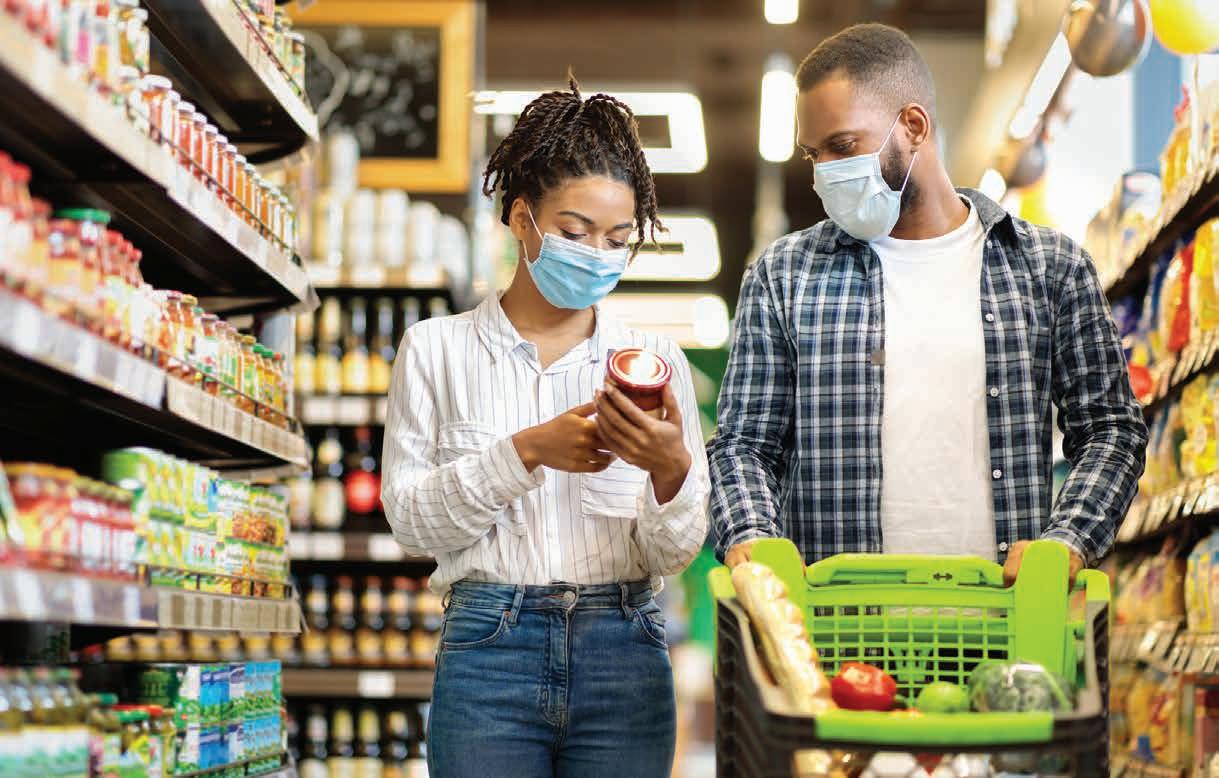
3 minute read
FOOD AND BEVERAGE
TAKE A BITE
Food and beverage manufacturing did better than most during the pandemic. But it’s not all good news, writes JAMES FRANCIS
As we all stay home, cutting down our patronage of restaurants and cafes, the food and beverage sector’s fortunes have decreased. According to a Deloitte report, COVID-19: Impact on food & beverage consumer products companies, reduced consumption and disrupted supply chains are the main antagonists.
The overall impact is tricky to measure, says Professor Ferdi Meyer, MD of the Bureau for Food and Agricultural Policy. “The total manufacturing sector was more severely impacted by the pandemic, with actual production levels dropping by 11 per cent when comparing 2020 with 2019. However,
SAFETY FIRST
Health and safety garnered even more attention than usual during the pandemic.
Fortunately, numerous food and beverage manufacturers could rely on their food safety management systems to meet We’ve adapted our soft new COVID-19-related requirements. drinks to local palates and taste preferences.” Since handwashing and some types of personal protective equipment are already mandated in the sector, switching – LISLE CLARK, CEO, TWIZZA to more stringent behaviour wasn’t too hard. However, it was costlier, says Linda
Jackson of Food Focus.
Most safety protocols impact restaurants and other hospitality businesses. For example, Sun
International mandates that its restaurants use reservations to manage capacity limits, and orders should be placed on a table and not directly into a customer’s hands. The South African Property
Owners Association offers comprehensive guidelines for food and beverage sellers.
Its advice includes separate takeaway areas, regular employee screening, and abiding by the Occupational Health and
Safety Act. total sales in manufacturing dropped by a slightly smaller margin of 9.9 per cent. The food and beverage sales increased marginally by 0.1 per cent in 2020 [according to StatsSA].”
That nudge hides two divergent trends. Food sales are up (6 per cent), whereas beverage sales, including alcohol, dropped by 14 per cent. It helped that parts of the sector were designated essential services. Local agriculture supplies also had a good year due to recovery from recent droughts and very favourable growing weather.
A RECOVERING SECTOR?
Generally speaking, there is an optimistic tone around the sector’s recovery. For example, the nascent and struggling local craft brewing market became creative with marketing and online sales. South Africa’s local food and beverage manufacturing capacity was also a boon: even as global supply chains stuttered, some local operations could pick up the slack. More significantly, local food and beverage manufacturing didn’t stall, and many constituents made significant upgrades to domestic supply chains.
But enthusiasm for local sourcing hasn’t quite materialised into tangible cases, says Linda Jackson, food safety and training consultant at Food Focus, a local start-up providing food sector resources. “We have seen a lot more chatter on our social feeds about buying and supporting local, but there is also limited supply. It is not possible to ‘grow’ the additional supply in the limited time. In the longer term, we need to be looking at food security policies that rely less on foreign supply where possible to avoid these kinds of supply chain disruptions.”
For many, the fallout from COVID-19 became a catalyst to modernise their systems. Digital supply chains are all the rage and the pandemic has encouraged their wider adoption. An example of this is how retailers increasingly connect with suppliers using electronic data interchange – paperless processes to manage and speed up orders.
But there is blood on the floor. The sector’s employment numbers have shrunk, and its SMEs are suffering because they often don’t have the sophisticated supply chains that major retailers could rely on, according to research by Dr Reena das Nair and Andrew Bowman. Many involved in feeding schemes, hospitality and catering also took massive blows.
DID YOU KNOW?
There are more than 1 800 food production companies operating in South Africa, but the top 10 make up more than 80 per cent of the industry’s production revenue.
Source: USDA Foreign Agricultural Service
WITH 2019.” – PROFESSOR FERDI MEYER, MD, BUREAU FOR FOOD AND AGRICULTURAL POLICY











